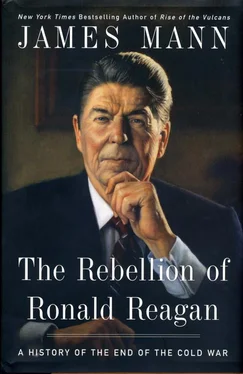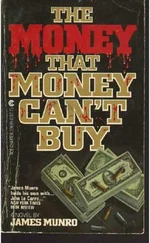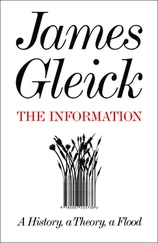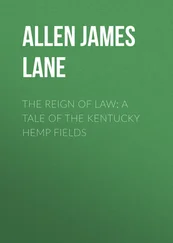Reagan seized upon the occasion to portray the Soviet Union as the force of darkness. The Cold War and the arms race between the United States and the Soviet Union were not the result of some “giant misunderstanding,” Reagan declared; rather, they were a “struggle between right and wrong and good and evil.” Choosing words that would be remembered for decades, Reagan branded the Soviet Union “an evil empire.” 12Stuart Spencer, Reagan’s longtime political adviser, had opposed the use of this rhetoric, and Reagan later admitted that Nancy Reagan hadn’t liked it either. Yet Reagan later acknowledged that he had given the “evil empire” speech “with malice aforethought…. I wanted to let [Soviet leader Yuri] Andropov know we recognized the Soviets for what they were.” 13
Thus, Reagan was recasting the American approach toward the Soviet Union to conform to his own transformational version of anticommunism. The Cold War, in Reagan’s terms, was not primarily a foreign-policy struggle but a moral one; the heart of the problem was the nature of the Soviet system. During the Nixon administration, the United States had dealt with the Soviet Union primarily as a rival superpower. Now, Reagan was branding the Soviet regime as repressive and repugnant.
Reagan’s rhetoric was accompanied by a startling series of policy changes aimed at reversing the course of the Cold War. During his first three years in office, Reagan approved a substantial defense buildup, a series of covert intelligence actions, a campaign to limit Soviet access to Western technology, and a series of secret national-security directives—all aimed at challenging the Soviet Union. In early 1982, before the Westminster speech relegating Marxist-Leninist doctrine to “the ash heap of history,” Reagan issued NSDD-32, a national-security directive declaring that the United States would seek to undermine Soviet control of Eastern Europe. On January 17, 1983, he went considerably further by approving NSDD-75, an order that committed the Reagan administration to a policy of seeking change inside the Soviet Union itself.
NSDD-75 said that the “primary focus” of American policy would be to “contain and over time reverse Soviet expansionism” by competing with Moscow in military power and in international diplomacy. That was, in itself, a hardening of America’s longstanding policies in the Cold War. Of even greater moment, the document said the Reagan administration’s policies would be dedicated to another purpose as well:
To promote, within the narrow limits available to us, the process of change in the Soviet Union toward a more pluralistic political and economic system in which the power of the privileged elite is gradually reduced. The U.S. recognizes that Soviet aggressiveness has deep roots in the internal system, and that relations with the USSR should therefore take into account whether or not they help to strengthen this system and its capacity to engage in aggression. 14
Reagan approved this directive less than two months before his “evil empire” speech. The speech was, in effect, the public version of the secret policy. NSDD-75 had been drafted by one of Reagan’s most hawkish aides: Richard Pipes, the Harvard historian of Soviet affairs. “As our unfortunate war in Vietnam demonstrated, it was impossible to stanch communist expansion by military means,” Pipes later explained. “One had to strike at the very heart of Soviet imperialism, its system.” The new Reagan policy did not call for use of military force against the Soviet Union, but it was, in the words of another Reagan aide, “a confidential declaration of economic and political war.” 15
Still, by Pipes’s own subsequent account, Reagan personally emphasized during the National Security Council’s final discussion of NSDD-75 that he wanted nothing in the document that would stand in the way of “compromise and quiet diplomacy” with Soviet leaders. 16Indeed, the document also included a section that said Reagan administration policy should seek to “engage the Soviet Union in negotiations to attempt to reach agreements which protect and enhance U.S. interests.” Thus, while labeling the Soviet Union an evil empire and challenging its policies around the globe, Reagan was at the same time laying the groundwork for talks with the Soviet leadership.
Two weeks after the “evil empire” speech, Reagan unveiled the final element in his array of new Soviet policies: the Strategic Defense Initiative, a proposal for a system that would shoot down incoming missiles and thus protect the United States from a nuclear attack. SDI (or “Star Wars,” as opponents nicknamed it) was easily the most far-reaching and expensive of Reagan’s defense programs. It was also a radical departure from past American ideas about national security. Previous American presidents had dealt with the threat of nuclear weapons through the policies of deterrence and “mutually assured destruction.” They accepted the idea that there was no way to defend the United States against a Soviet nuclear attack and relied instead on having the ability to retaliate with a massive American nuclear strike against the Soviet Union; by this logic, the leaders of the two superpowers would be held back from nuclear war by the certain knowledge that it would lead to a cataclysmic response, costing millions of lives in their own countries.
By 1984, as Reagan’s first term drew to a close, it had become clear that his administration was fundamentally different in nature from those of Nixon and Ford, his two Republican predecessors. While Nixon had held three summit meetings in three years with Leonid Brezhnev between 1972 and 1974, Reagan avoided summits throughout his first term. In that period, his foreign policy had been dominated by the relentlessly anti-Soviet policies of Secretary of Defense Caspar Weinberger; William Casey, CIA director; Jeane Kirkpatrick, ambassador to the United Nations; and a series of second-level officials, such as Undersecretary of Defense Richard Perle.
Haig, the Reagan appointee who symbolized continuity with the Nixon-Kissinger era, had been eased out as secretary of state in 1982 and had been replaced by George Shultz, the former treasury secretary whom Nixon had denounced in his memo to Reagan as lacking a depth of understanding in foreign policy. Jack F. Matlock, Jr., who served as a Soviet specialist on Reagan’s National Security Council and later as U.S. ambassador in Moscow, described succinctly the underlying disagreement in approach between Haig and Reagan. “He [Haig] was less sanguine than Reagan and Shultz that the Soviet Union could change, and therefore posed more limited goals for U.S. policy than they eventually did,” wrote Matlock. “[He] would very likely have settled for something resembling a cease-fire in place. This would have reduced pressure for internal reform in the Soviet Union…. The world would have seemed safer to Western publics, but the East-West divide would have remained. The Cold War would perhaps have been dormant for a time, but would not have ended as a result.” 17
The Nixon veterans reacted to Reagan’s first-term Soviet policies with a peculiar blend of horror and admiration. They were taken aback by Reagan’s rhetoric and by his emphasis on moral concerns and ideals, rather than geopolitics, as the basis for American foreign policy. Yet the old Nixon team also recognized that Reagan had managed to win public support for his defense buildup and anti-Soviet policies and had overcome the opposition of liberals and Democrats—goals the Nixonites had sought but failed to accomplish in the 1970s. “Reagan was succeeding at what Nixon and Ford had wanted to do,” observed Peter Rodman, a former aide to Kissinger. 18
The Nixonites sought during this period to play the role of intermediaries between the Reagan administration and the Soviet Union. Nixon and Kissinger met from time to time with Dobrynin to offer information on what the Reagan White House was thinking and to offer tips on how to cope with Reagan. In these conversations, they sometimes spoke in scathing terms about the president. “Henry Kissinger… stressed that the Reagan administration had no coherent program to deal with the Soviet Union because Reagan had never thought about it seriously, and the State Department was characteristically lacking in initiative and courage to suggest new ideas,” recorded Dobrynin. 19Conversely, Nixon and Kissinger also offered advice to the Reagan White House about what the Soviets were thinking and about how to deal with Moscow.
Читать дальше












